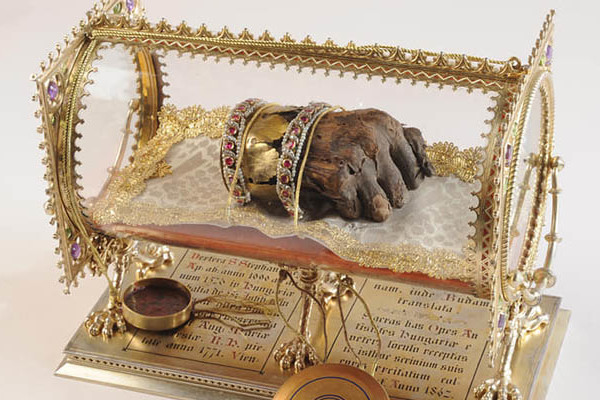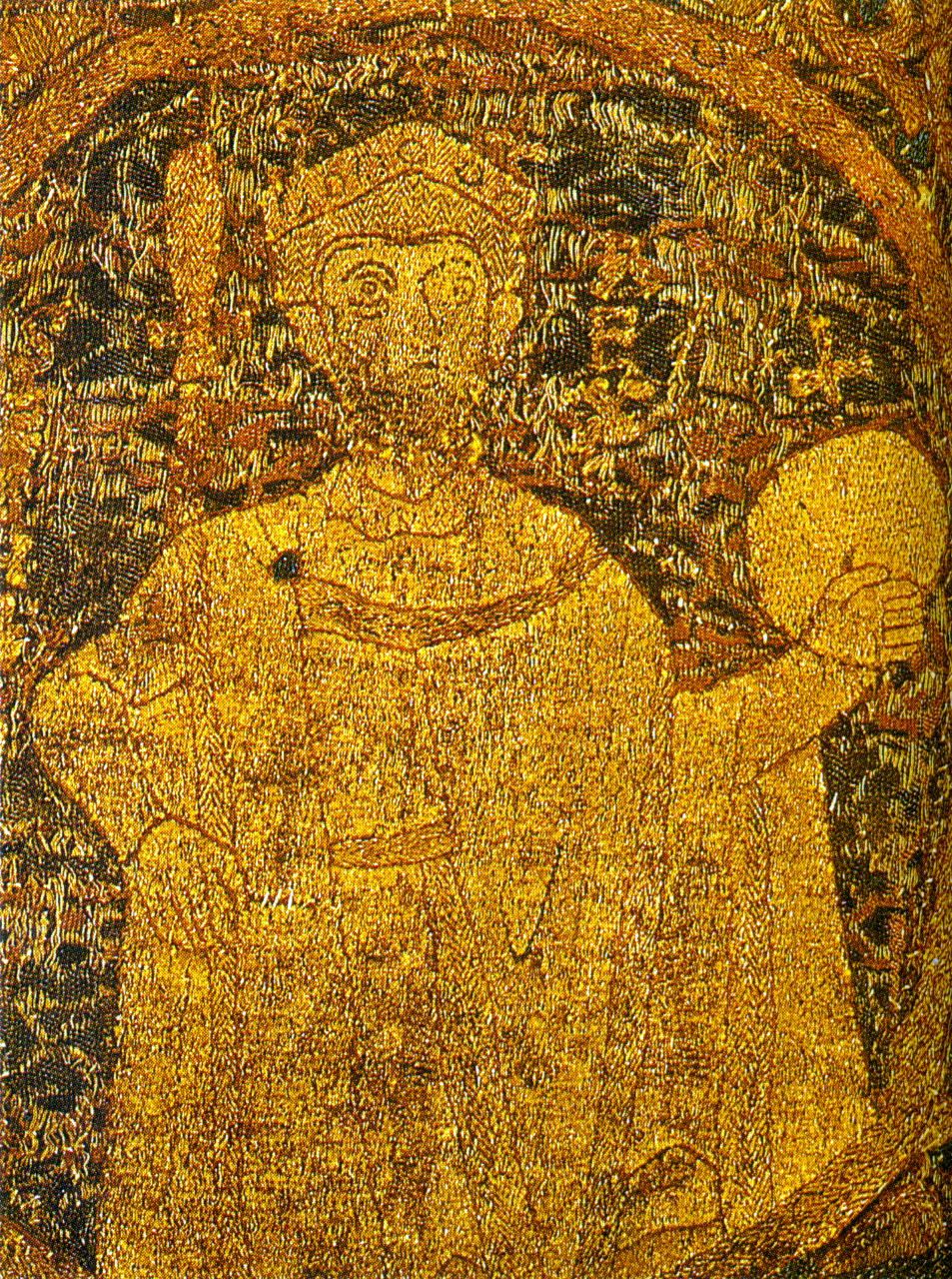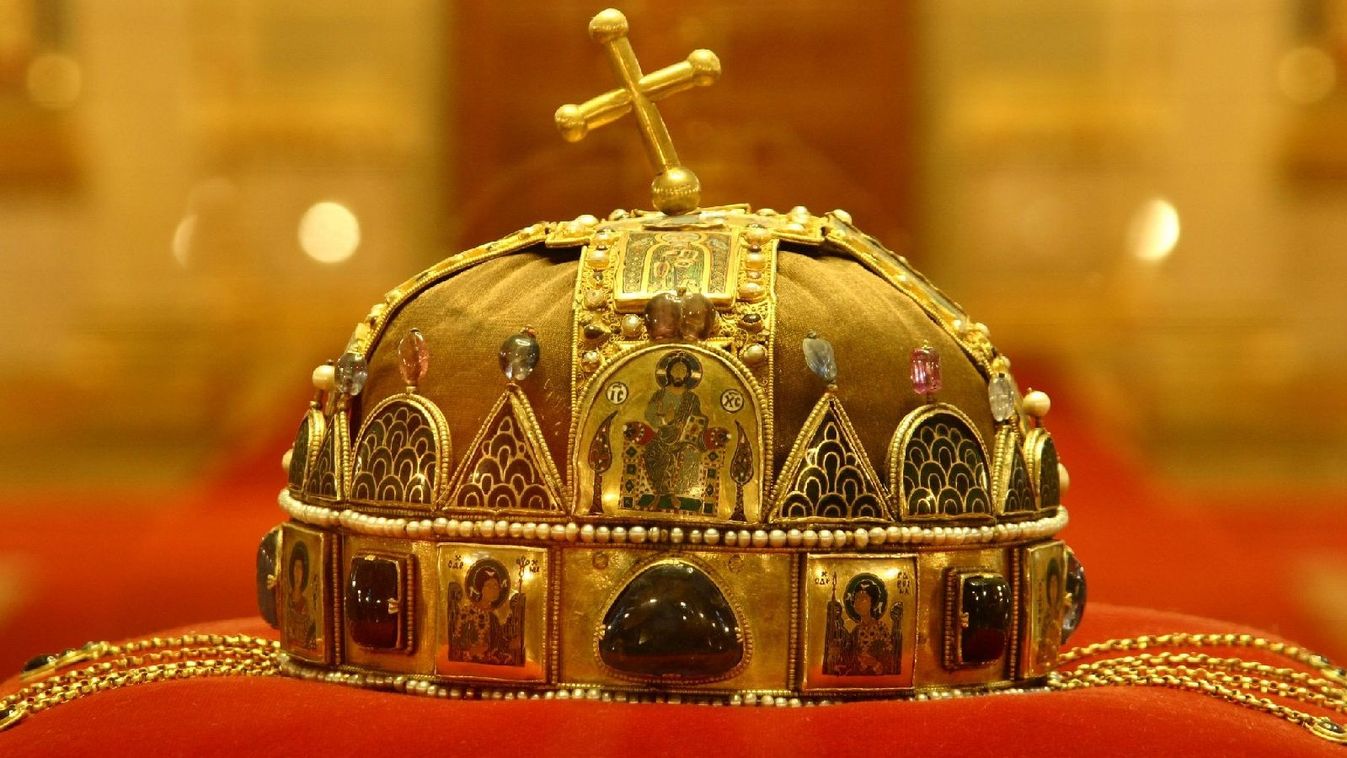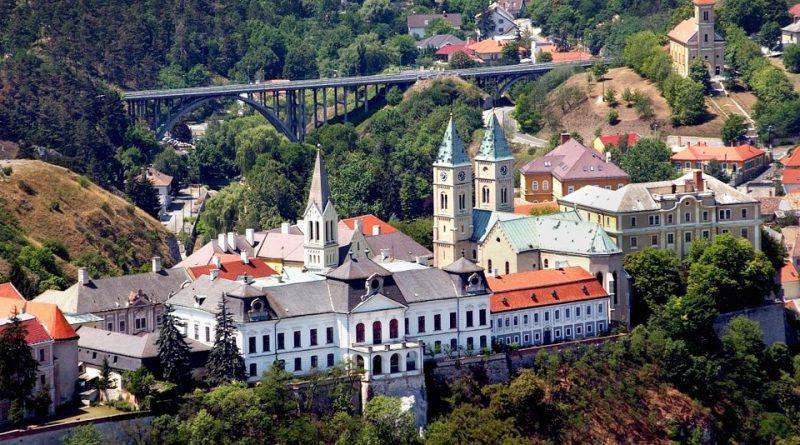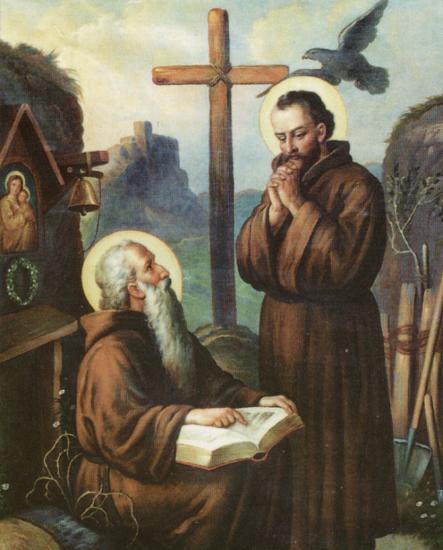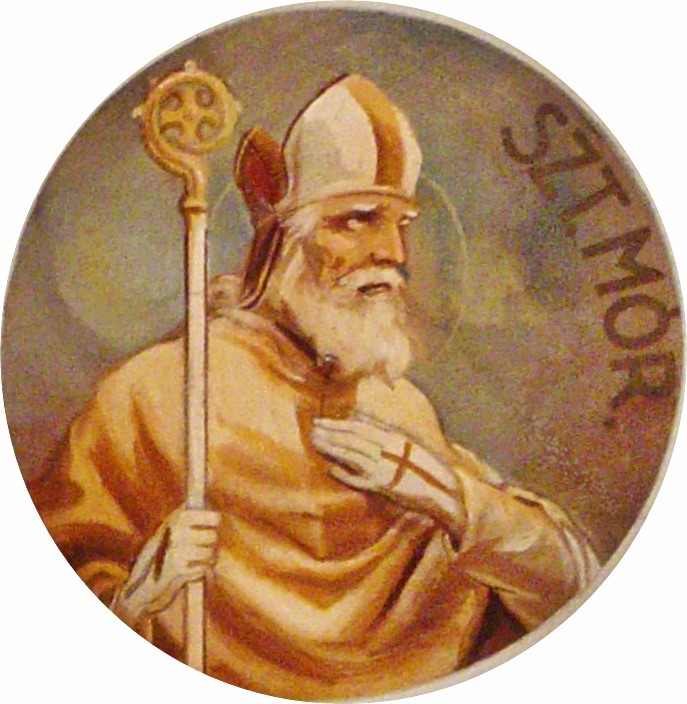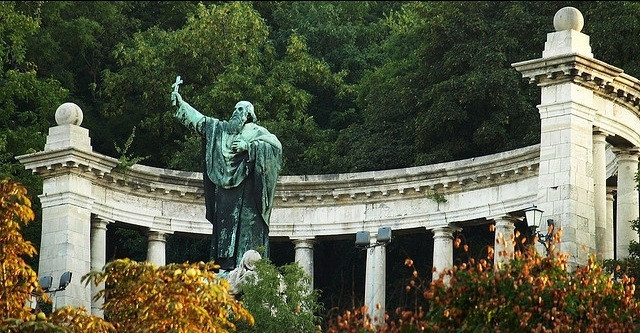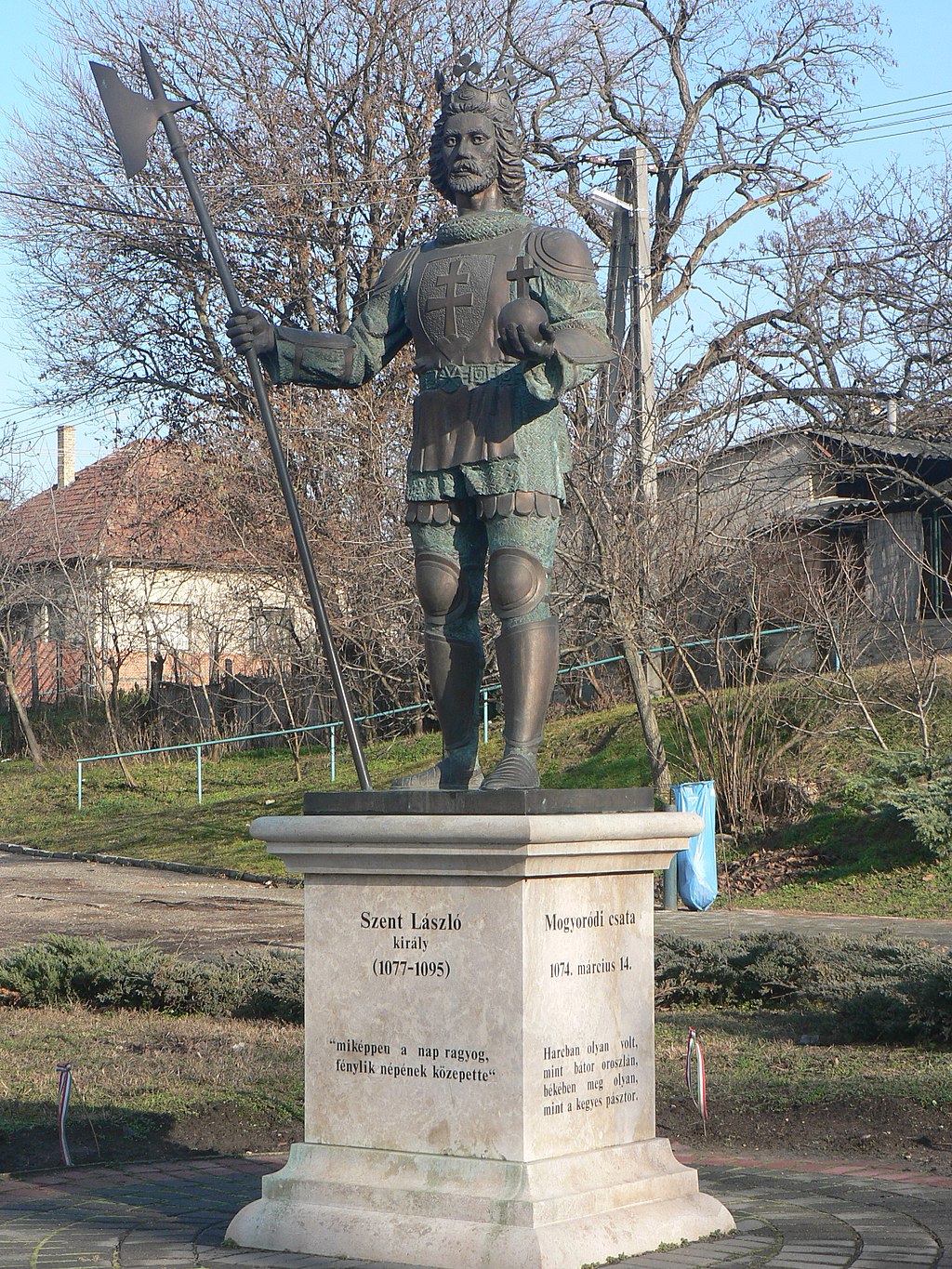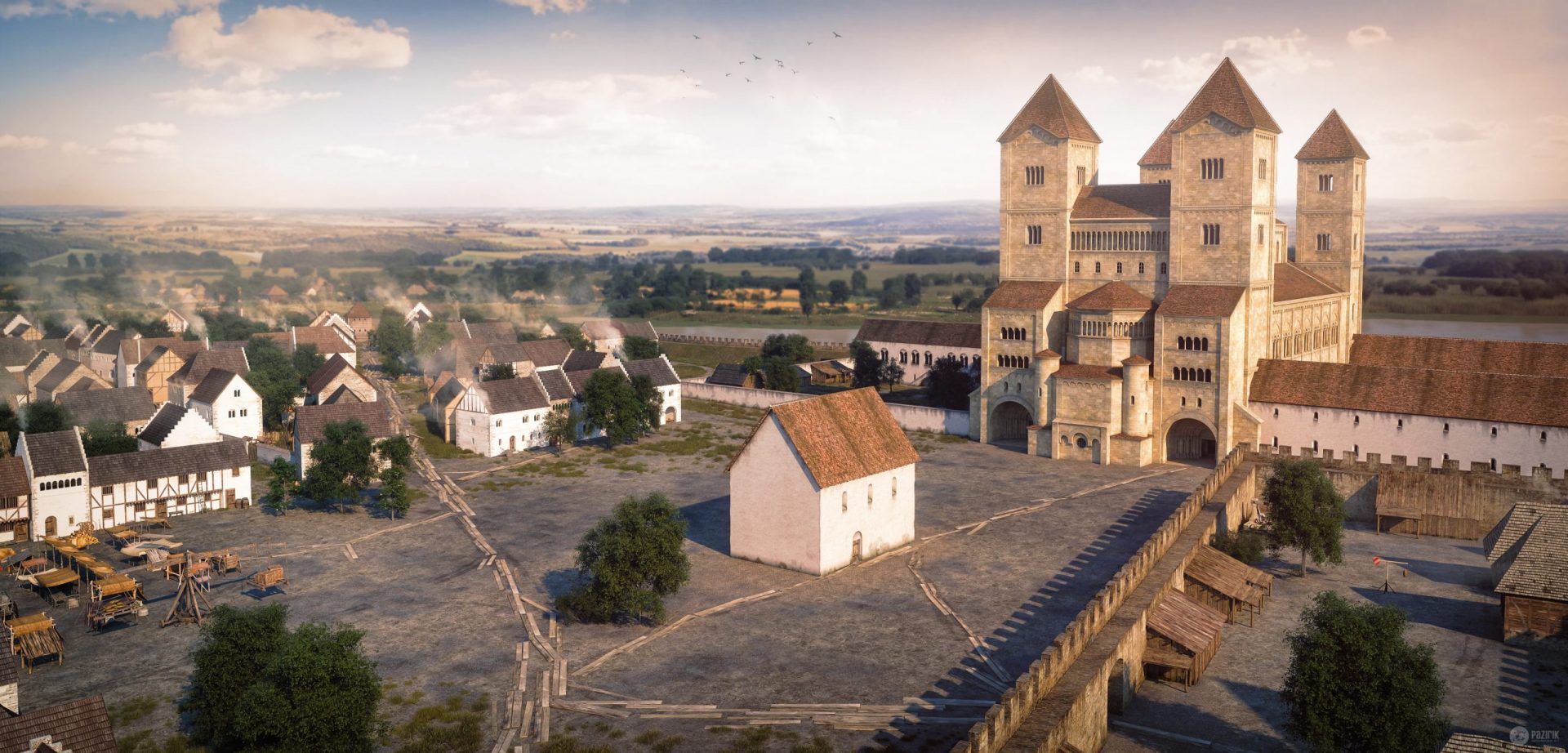
St. Stephen and others – First saints in the Kingdom of Hungary – Székesfehérvár – Basilica of Székesfehérvár
Hungarian figure of the „The patrons and guardians of the land” topic
Székesfehérvár, one of Hungary’s oldest cities, holds a special place in the nation’s history as the coronation and burial site of many Hungarian kings. This city symbolizes the foundation of the Hungarian state and the establishment of Christianity in the region. The legacy of St. Stephen and the early saints of the Kingdom of Hungary is deeply intertwined with Székesfehérvár, making it a pivotal location for understanding Hungary’s early history and religious heritage.
St. Stephen established a network of dioceses, built churches, and integrated Hungary into the European Christian cultural sphere. Székesfehérvár, known in medieval times as Alba Regia, was designated by St. Stephen as a principal royal and ecclesiastical center, hosting his royal basilica, although the early Árpád-era court itself remained largely itinerant. This basilica became the site where Hungarian kings were crowned and buried, underscoring Székesfehérvár’s significance as the heart of the medieval Hungarian state.
The Basilica of Székesfehérvár, although largely in ruins today, was once a magnificent structure and a center of religious and political power. It was here that St. Stephen was buried, and it housed the remains of many of his successors. The basilica also became a place of pilgrimage, attracting those who sought to honor the first king and the country’s founding saints.
In addition to St. Stephen’s founding saints, other early saints played crucial roles in the establishment of Christianity in Hungary. St. Emeric, the son of St. Stephen, is venerated for his piety and dedication to Christian virtues. His untimely death meant he never ascended to the throne, but he was canonized for his holiness and is remembered as a symbol of youthful purity and devotion.
Another significant figure is St. Gerard (Gellért), an Italian bishop who became one of Hungary’s first martyrs. He was tasked with educating St. Emeric and played a key role in spreading Christianity. His martyrdom in 1046 during a pagan rebellion solidified his status as a saint and a heroic figure in Hungary’s Christian history.
Székesfehérvár’s historical significance extends beyond its association with these saints. It served as a major economic and military center, influencing the development of the Hungarian state. The city’s rich history is preserved in its numerous monuments, museums, and archaeological sites, offering a glimpse into Hungary’s medieval past.
Facts


